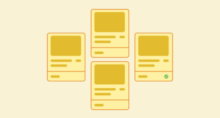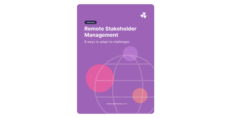Championing the Shift to Renewables in Regional Communities

In Australia, like many other countries, the transition to renewable energy is a crucial part of moving towards net zero.
An expected 82% of Australia’s electricity will come from renewable sources by 2030. But the transition to renewables is becoming increasingly urgent, with 90% of Australia’s aging coal-fired power stations closing by 2035 (and all by 2040), and 2,500 km of new transmission already underway to connect renewables to households.
Despite this essential shift towards renewables, support for renewable energy projects remains limited, especially in impacted regional communities where infrastructure is being proposed or rolled out.
The challenge? If you’re managing a renewable energy project like offshore/onshore wind farms, solar farms, and hydropower plants, your project success likely depends on the support of regional communities. This means you must:
- Implement best practice community engagement
- Seek to understand the unique perspectives of regional communities
- Champion the shift to renewables
So, how do you do that?
We’ve put together some of the latest research to help inform current stakeholder engagement strategies for renewable energy teams and those facing significant opposition. If you’re ready to champion the transition to renewables and better engage regional communities, this is the place to start.
Latest Research: Community Perspectives on Renewable Energy

Some new research has just come out of RE-Alliance, an independent not-for-profit advocacy organization working to secure an energy transformation that delivers long-term benefits and prosperity to regional Australia.
They conducted qualitative and quantitative research earlier this year (2024) to understand how organizations and governments can shift perspectives on renewables — helping communities go from from fear to focusing on the benefits and opportunities. Their research process included stakeholder interviews, online focus groups, an online discussion group, and a survey of 2000+ people.
The findings they shared were fascinating and highly relevant to anyone working in the renewable energy industry, as well as stakeholder engagement professionals exploring new ways to build trust in regional communities.
Their findings include:
- ~60% support the transition to renewables, government investment in the shift to renewables, and the development of large-scale renewable energy infrastructure.
- 82% and 79% of community members are dissatisfied with the level of information provided about the transition to renewables from governments and renewable energy developers, respectively.
- The dominant attitude towards developing renewable infrastructure is “soft support” at 56% — an audience that is more likely to be female, younger, Labor/Greens voters, and university educated.
- Participants placed the most trust in friends and family (44% “trust a lot”) and the least trust in nonprofits/advocacy groups (21% “do not trust at all”).
- When it comes to specific information sources, people had the least trust of foreign-owned renewable energy developers (58% “do not trust at all”) compared to local councilors, MPs, and council (30-32% “do not trust at all”).
- Participants get most of their news and current events from news broadcasters (42%), followed by social media (27%), national newspapers (11%), radio (7%), and friends/family (7%) — but this varied based on participant age and gender.
- Focus group participants easily expressed their concerns around large-scale renewables, but struggled to identify potential benefits or positive stories.
Key concerns with renewables included:
- The lack of long-term economic benefits
- Impacts on the natural environment
- Poor engagement and communication
- Costs associated with the transition
- The reliability of renewables
Importantly, the lack of consultation and engagement with local communities was the second highest concern (79%) when considering the development of large-scale renewable energy infrastructure in regional Australia.
These perspectives likely aren’t unique to Australia. Although more than two-thirds of Americans are reported to favor renewables over fossil fuels, these projects are commonly opposed, with an estimated 300 transmission, wind, and solar projects delayed by opposition, impacting around 74,000 jobs and US$88 billion in investments.
Effective Messaging Strategies for Renewables in the Regions

Based on their research findings, RE-Alliance suggested that renewable energy organizations could benefit from messaging strategies that were better tailored to stakeholders’ main concerns. They tested the following narratives, each of which were considered “convincing” by at least 65% of participants:
- Economic/Embrace Change Frame – The shift is already happening and Australia is uniquely positioned with abundant natural resources. The change won’t be easy but through collaboration, we’ll get the best outcomes for our community.
- Community Voice Frame – We hear your concerns about potential impacts on nature and regional communities, and that you haven’t been given enough information about these impacts. We’ll equip you with the right information so you can shape your future and ensure your community will benefit.
- Nature Frame – The only way we can make a real impact on climate change and minimize the destruction of much-loved natural places is to power Australia through renewables.
But perhaps the biggest messaging takeaway is that national messages do not work in the regions. You must tailor your stakeholder communication to local contexts and concerns. In fact, we’d go one step further than this — your stakeholders won’t necessarily think and feel the same way as their next door neighbor. The more you can personalize your messaging and engagements, the better.
If you have insights into the issues and sentiments of specific stakeholder groups and individuals (which is possible via the qualitative analysis, issues tagging, and sentiment analysis tools inside Simply Stakeholders), you can get even more specific with your communications.
By the way, a good example of the Economic/Embrace Change frame in practice is Queensland’s renewable energy targets article. Note how the messaging focuses on the scale of the change, its economic benefits, and that it’s well underway:
| Queensland boasts 55 large-scale renewable energy projects (operating, under construction or financially committed) since 2015. This represents more than $12 billion of investment, around 9,000 construction jobs, over 6,000 megawatts (MW) of clean energy and more than 16 million tonnes of avoided emissions each year (current as at 30 June 2024).
Combined with rooftop solar, the state has more than 10,000MW of renewable energy capacity, putting downward pressure on electricity prices. In total, 27% of electricity generated in Queensland is produced from renewable energy sources (current as at 30 June 2024). |
Recommendations for Engaging Stakeholders in the Transition to Renewable Energy
Aside from getting the messaging right, what else can renewable energy developers and consultation professionals do to engage their stakeholders on renewables? Based on the findings from RE-Alliance and other research studies, practical recommendations include:
- Build understanding – Overcome opposition due to misinformation by helping locals better understand the energy transition, its potential benefits, and how the different types of renewable energy work (and don’t be afraid to get creative!).
- Encourage ownership – According to a study of Australian renewable energy, local involvement or ownership can support regional value creation and broader acceptance from the community.
- Show – Build trust and illustrate the tangible benefits for locals by promoting lived experiences and sharing content that’s very specifically targeted to your location.
- Leverage trusted stakeholders – Trust in organizations and governments is low (and has been for some time), so try to find and nurture local champions and leverage trusted local voices to share your messages with the community.
Predictions: A Lot More Engagement on Renewables to Come
It’s fair to say that we’ll likely see an increase in community engagement around the shift to renewables over the coming years. And not just because new research shows that engagement and information sharing has been underwhelming thus far.
The Australian Government Department of Climate Change, Energy, the Environment and Water (DCCEEW)’s Powering Australia plan has funded a number of engagement-related initiatives, such as the following measure funded in the 2024-25 Budget:
“Improving community engagement through the Australian Energy Infrastructure Commissioner. Creating voluntary national developer standards for new infrastructure projects. ($20.7 million over 7 years)”
Clean Energy Council is also advocating for a stronger focus on community engagement, social license, and building long-term relationships and trust with communities, as part of “doing renewables right”. They provide best practice guidelines for community engagement and benefit sharing, and run a special interest group for industry professionals to upskill and stay on top of emerging issues.
Towards Net Zero’s Regional Transitions project partners with region to help connect key stakeholders involved in the transition to a low emissions future to support learning, build skills, and encourage stakeholder collaboration. By encouraging different stakeholders to come together at roundtables to share stories, experiences, and perspectives, they hope to empower community participation, increase coordination, and facilitate actions that support net zero.
And of course, recommended actions in this Australian Industry Energy Transitions Initiative report on setting up industrial regions for net zero included developing new ways to collaborate, facilitating active engagement in regional leadership and coordination efforts, and collaborating to align policy and regulation to net zero.
Meanwhile, the Energy Charter’s Evaluating Transmission Undergrounding initiative, which involves collaborating with community representatives through a Community Outcomes Group and stakeholders in response to suggestions that undergrounding new transmission lines has not been adequately considered. Consultation is still underway and has included independent research, a Collaborator Insights Report, and the co-development of a public information hub. This initiative is also a great example of engaging regional communities on issues related to the transition to renewables.
Key Takeaways

To wrap up the research and findings, it’s absolutely critical to understand your regional perspectives and tailor your engagement to them. You must implement genuine, best-practice engagement from the start. And don’t stop — there’s an increasing need and expectation for developers and governments to invest more heavily in effective stakeholder engagement and community participation when it comes to renewable energy initiatives and projects.
Lastly, apply the insights we’ve shared from the studies. The findings tell a consistent story that will likely have some relevance for other regions, not just Australia. By applying the insights, you can play a bigger part in championing the shift to renewables in regional areas (and beyond!).
Keen to learn more? Check out RE-Alliance’s past reports to see more research and learn about their work.
Become a Subscriber Don’t miss out on more insights like this! Subscribe to get our regular updates.






























